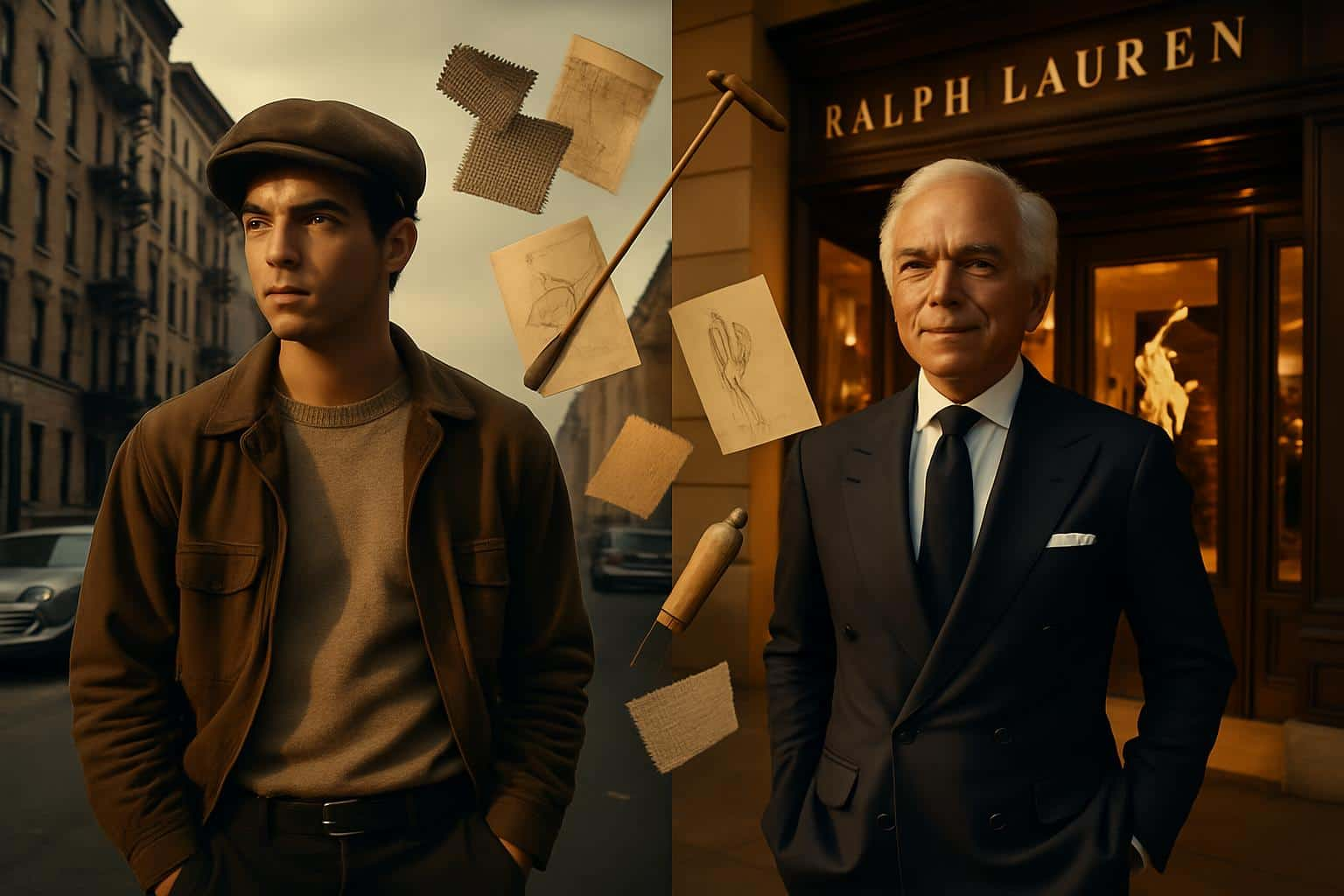Table of contents
- Early Life & Struggles
- Turning Points
- Breakthrough Success
- Expanding the Brand
- Hollywood & Cultural Breakthroughs
- Key Business Moves
- Corporate Growth & Diversification
- Digital and Retail Innovation
- Legacy & Lessons Learned
- A Pioneer of Lifestyle Branding
- Vision Over Conformity
- Reinvention as a Path to Growth
- The Power of Persistence
- Storytelling as Strategy
- Commitment to Quality and Craftsmanship
- Global Appeal of the American Dream
- Balancing Tradition and Innovation
- Success Beyond Wealth
- A Living Testament to the American Dream
- Enduring Inspiration for Dreamers Everywhere
- Sources:
Ralph Lauren transformed from a bullied kid named Ralph Lipschitz in the impoverished Bronx into one of America’s most iconic fashion moguls. His journey from selling ties out of a single drawer to building a multibillion-dollar empire represents one of the most compelling rags-to-riches stories in modern business history.
Born into a family of Jewish immigrants struggling to make ends meet, Lauren faced ridicule and hardship that would have crushed lesser spirits. Instead, he channeled his pain into an extraordinary vision that would revolutionize American fashion and create a global lifestyle brand worth billions.
This is the story of how a young man with nothing but dreams and determination built an empire that defines American style worldwide. Lauren’s transformation from Ralph Lipschitz to Ralph Lauren mirrors the classic American dream, proving that with enough vision and persistence, anyone can rise from the humblest beginnings to achieve extraordinary success.
Early Life & Struggles
Born in the Bronx
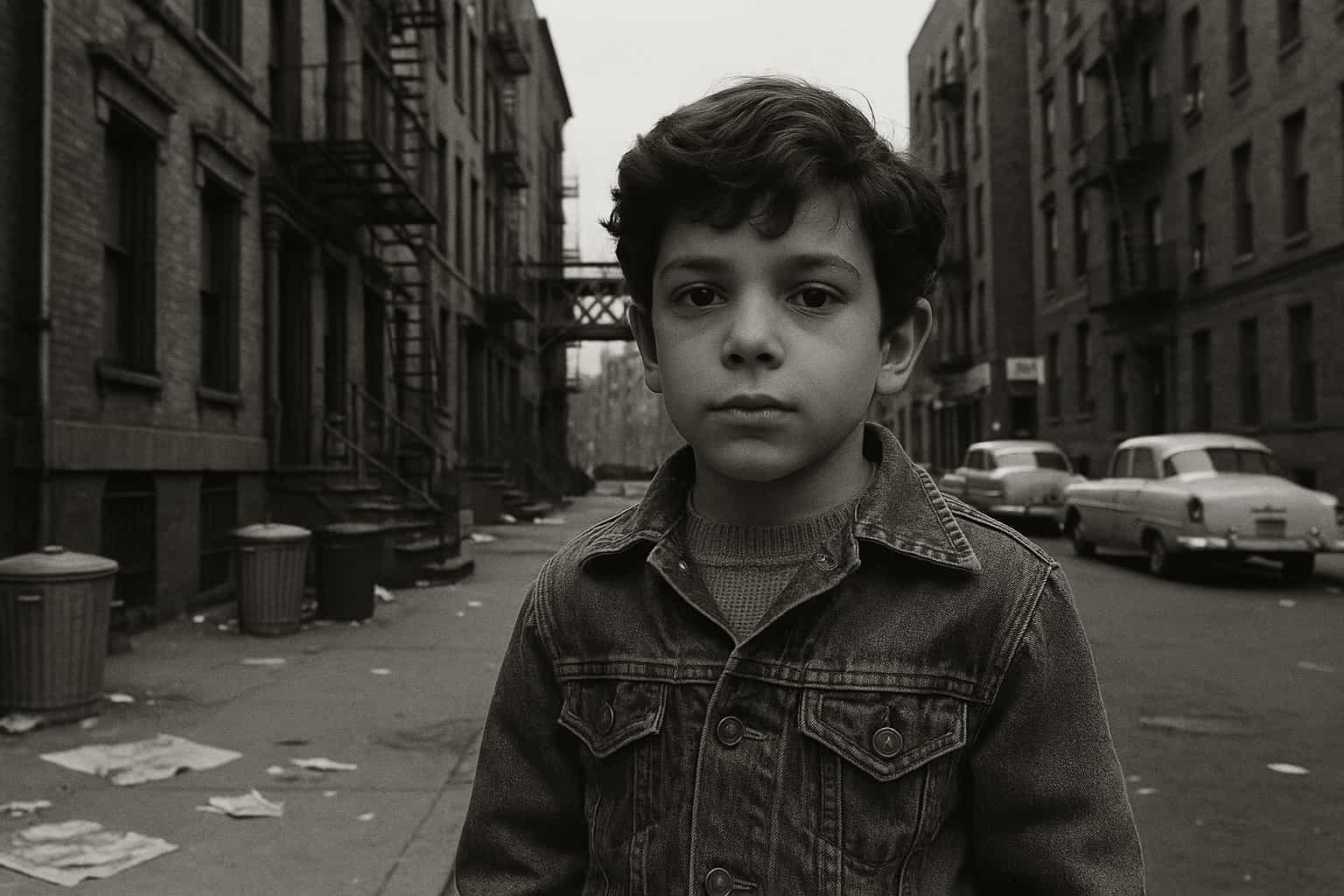
Ralph Lauren entered the world as Ralph Lifshitz on October 14, 1939, in the gritty neighborhoods of the Bronx, New York City. His parents, Frank and Frieda Lifshitz, were Ashkenazi Jewish immigrants who had fled poverty and persecution in Eastern Europe, seeking the American dream that seemed perpetually out of reach.
A Family Battling Hardship
Frank Lifshitz worked as a house painter and artist, struggling to provide for his family of six. Frieda, originally from Drohiczyn in what is now Belarus, worked tirelessly to stretch every dollar. The youngest of four siblings, Ralph grew up watching his parents sacrifice daily to keep food on the table and a roof over their heads.
Shaped by Poverty
Poverty defined Ralph’s early years in ways that would shape his entire worldview. The family lived in a cramped apartment where luxury was a foreign concept. Ralph learned early that appearances mattered in a world that judged you by what you wore and how you carried yourself.
A Name That Drew Bullies
School became a battleground for young Ralph. His surname, Lifshitz, made him an easy target for cruel classmates who mocked and bullied him relentlessly. The teasing was so severe that it left deep psychological scars, teaching him that sometimes you must reinvent yourself to survive and thrive.
Dreaming in Technicolor
Despite the hardships, Ralph discovered an escape that would prove prophetic. He spent countless hours at local movie theaters, losing himself in the glamorous worlds of Hollywood stars like Cary Grant and Gary Cooper. These men represented everything Ralph wasn’t but desperately wanted to become: sophisticated, elegant, and respected.
Biographer Michael Gross noted that Ralph “would literally fall into the fantasies of the movies of that era.” This ability to project himself into fictional worlds of luxury and refinement became the foundation of his future success. While other kids played sports or hung out on street corners, Ralph studied the way movie stars dressed, moved, and carried themselves.
An Unconventional Education
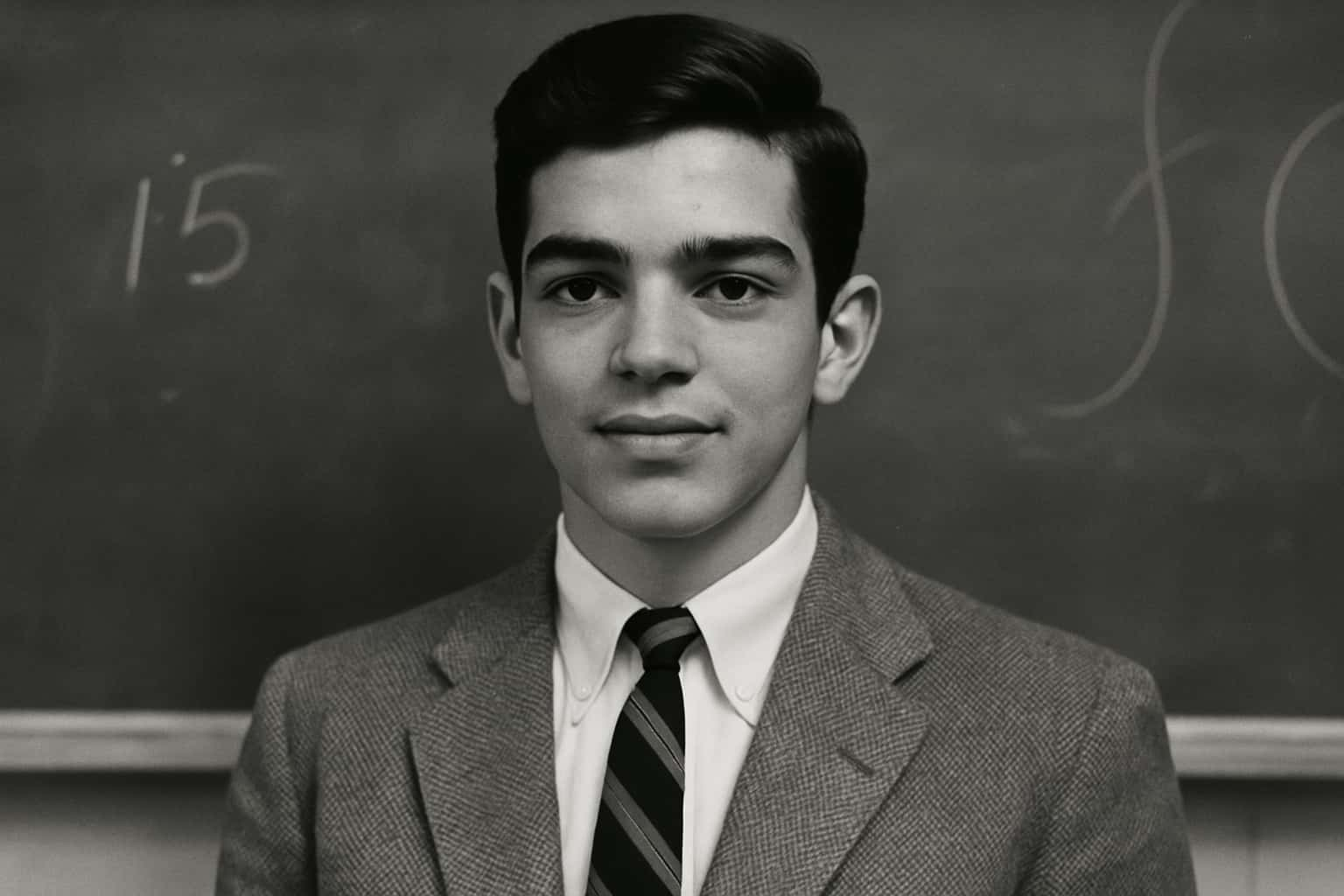
Education offered another challenge for the ambitious young man. Ralph attended day school followed by the Manhattan Talmudical Academy before graduating from DeWitt Clinton High School in 1957. His high school yearbook entry revealed his burning ambition: he wrote “millionaire” as one of his life goals, a declaration that seemed impossible given his circumstances.
Leaving College Behind
College presented new obstacles when Ralph enrolled at Baruch College of the City University of New York to study business. However, financial pressures and his eagerness to start earning money led him to drop out after just two years. This decision would later prove that formal education isn’t always necessary for extraordinary success.
Turning Points
Reinvention Through a Name Change
Ralph’s first major turning point came at age 16 when he made a decision that would change his life forever. Unable to endure the constant bullying over his surname, he and his brother George legally changed their last name from Lifshitz to Lauren. This transformation represented more than just a name change; it symbolized his determination to reinvent himself completely.
Discipline in the U.S. Army
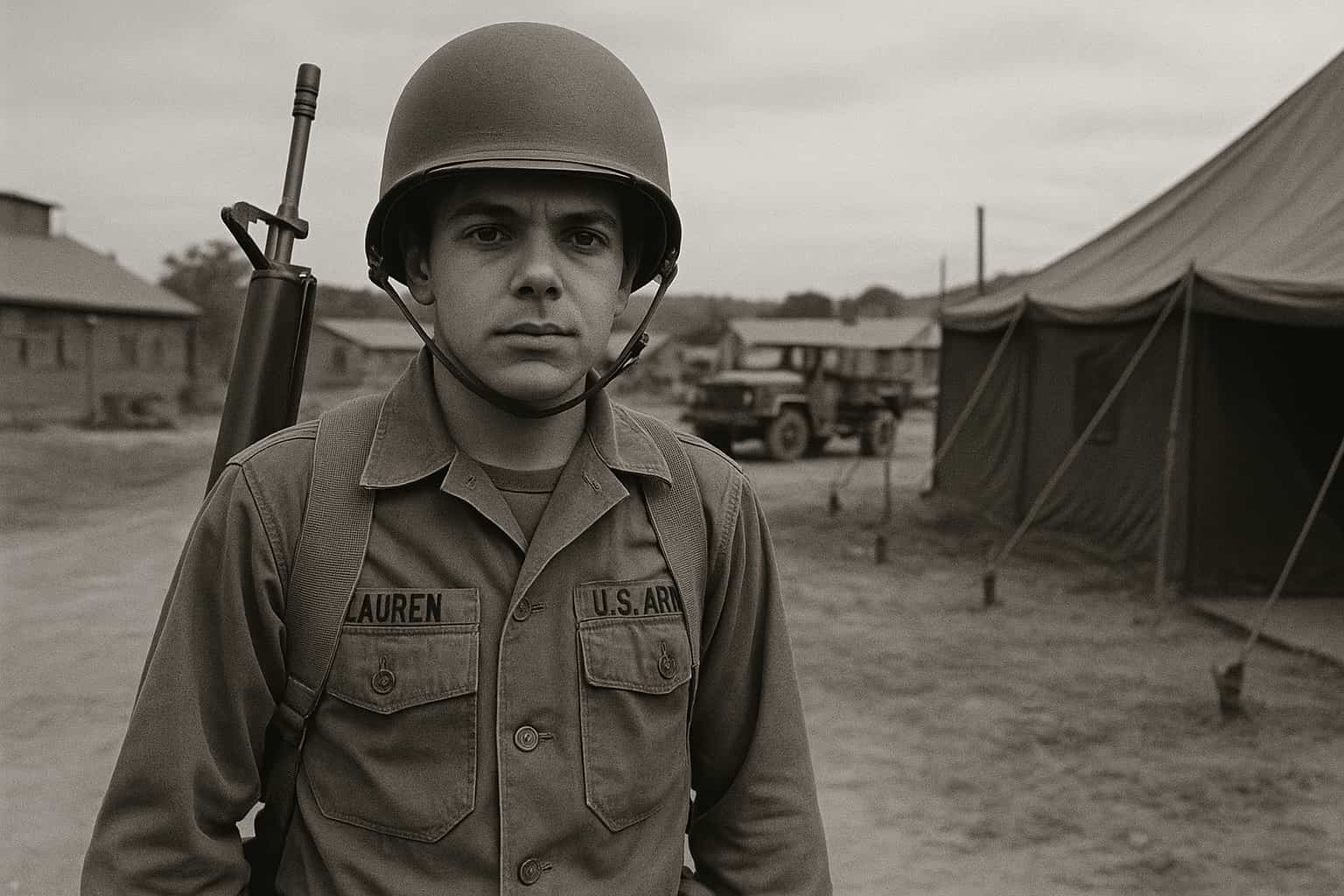
Military service provided Ralph’s next crucial turning point. From 1962 to 1964, he served in the United States Army, an experience that taught him discipline, leadership, and the importance of presentation. The military’s emphasis on crisp uniforms and attention to detail resonated deeply with his growing appreciation for style and quality.
Learning Style at Brooks Brothers
After his discharge, Ralph took a job as a sales assistant at Brooks Brothers, America’s oldest men’s clothing retailer. This position exposed him to high-quality menswear and sophisticated customers who appreciated fine craftsmanship. Working at Brooks Brothers was like attending a master class in American style and business etiquette.
The Polo Match That Changed Everything
However, the most transformative moment in Ralph’s life came when a friend named Warren Helstein invited him to his first polo match. Helstein later recalled how they were exposed to “fabulous things” – the silver, the leather, the horses, the “tall slinky blondes with the big hats,” and the high society that seemed impossibly glamorous.
This polo match awakened something profound in Ralph’s imagination. He saw a world of elegance and refinement that perfectly matched the fantasies he had cultivated watching movies as a child. The sport represented everything he admired: tradition, quality, exclusivity, and timeless style.
First Steps in Fashion Design
Ralph’s entrepreneurial spirit ignited when he moved to work for Beau Brummell, a necktie manufacturer. Despite having only a high school diploma and limited business experience, he convinced the company president to let him design his own line of ties. This bold move required tremendous courage, as failure could have ended his career before it truly began.
Founding The Ralph Lauren Corporation
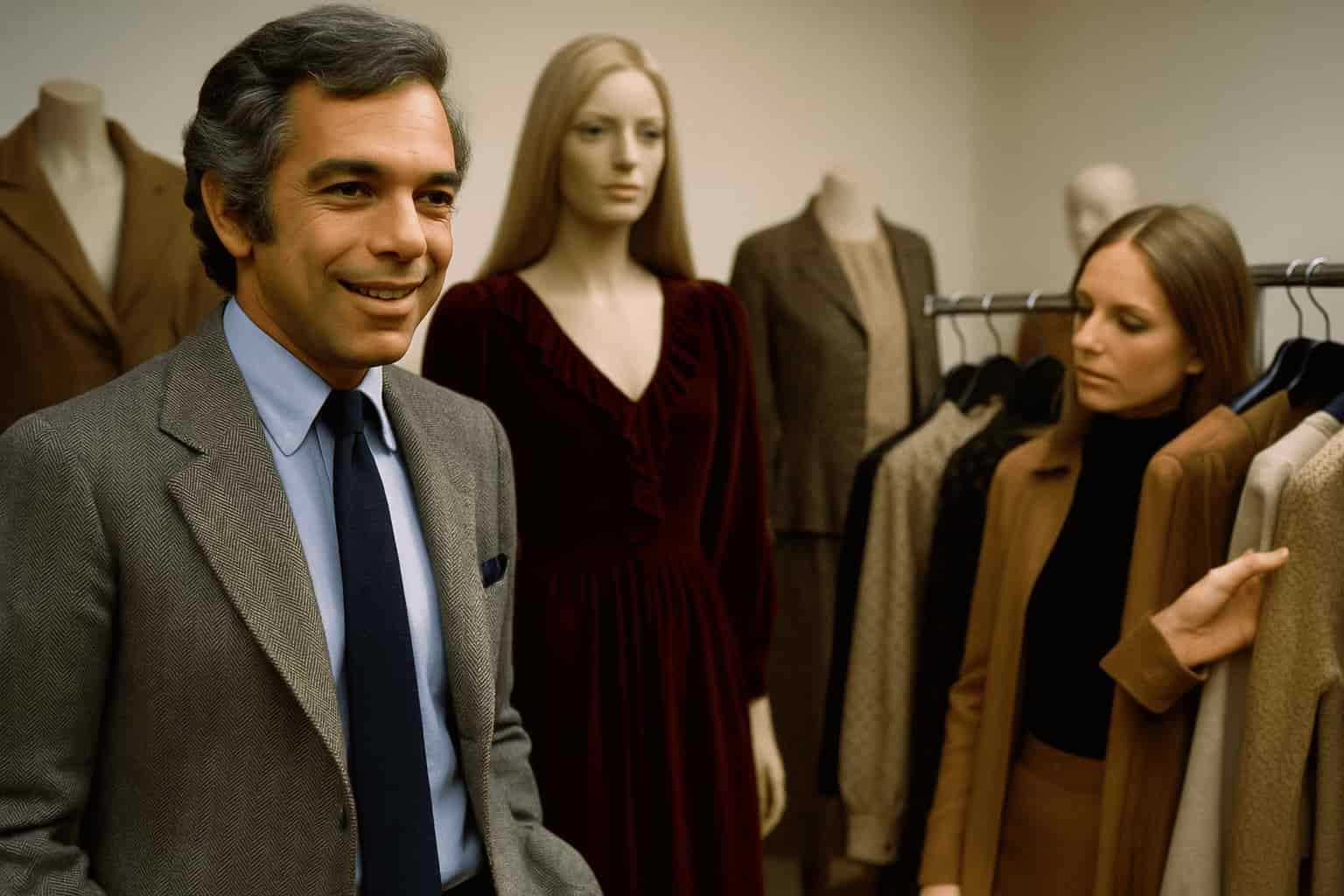
The decision to start his own company in 1967 represented the ultimate turning point. Ralph launched The Ralph Lauren Corporation with nothing but determination and a vision of creating clothing that embodied the sophistication he had always admired. He worked out of a single drawer in a showroom at the Empire State Building, making deliveries to stores himself.
Naming the Brand: Polo
Ralph’s next pivotal decision was to name his first full menswear line “Polo” in 1968. This choice connected his brand to the sport that had inspired his transformation, imbuing his clothing with associations of luxury, tradition, and exclusivity. The name “Polo” suggested a lifestyle that most people could only dream of experiencing.
Breakthrough Success
Redefining the Necktie Market
Ralph’s breakthrough came with a radical design decision that defied conventional wisdom. While the fashion industry favored narrow, plain neckties, he created wide, colorful ties that stood out dramatically from the competition. This bold choice demonstrated his willingness to trust his instincts over market trends.
Winning Over Bloomingdale’s
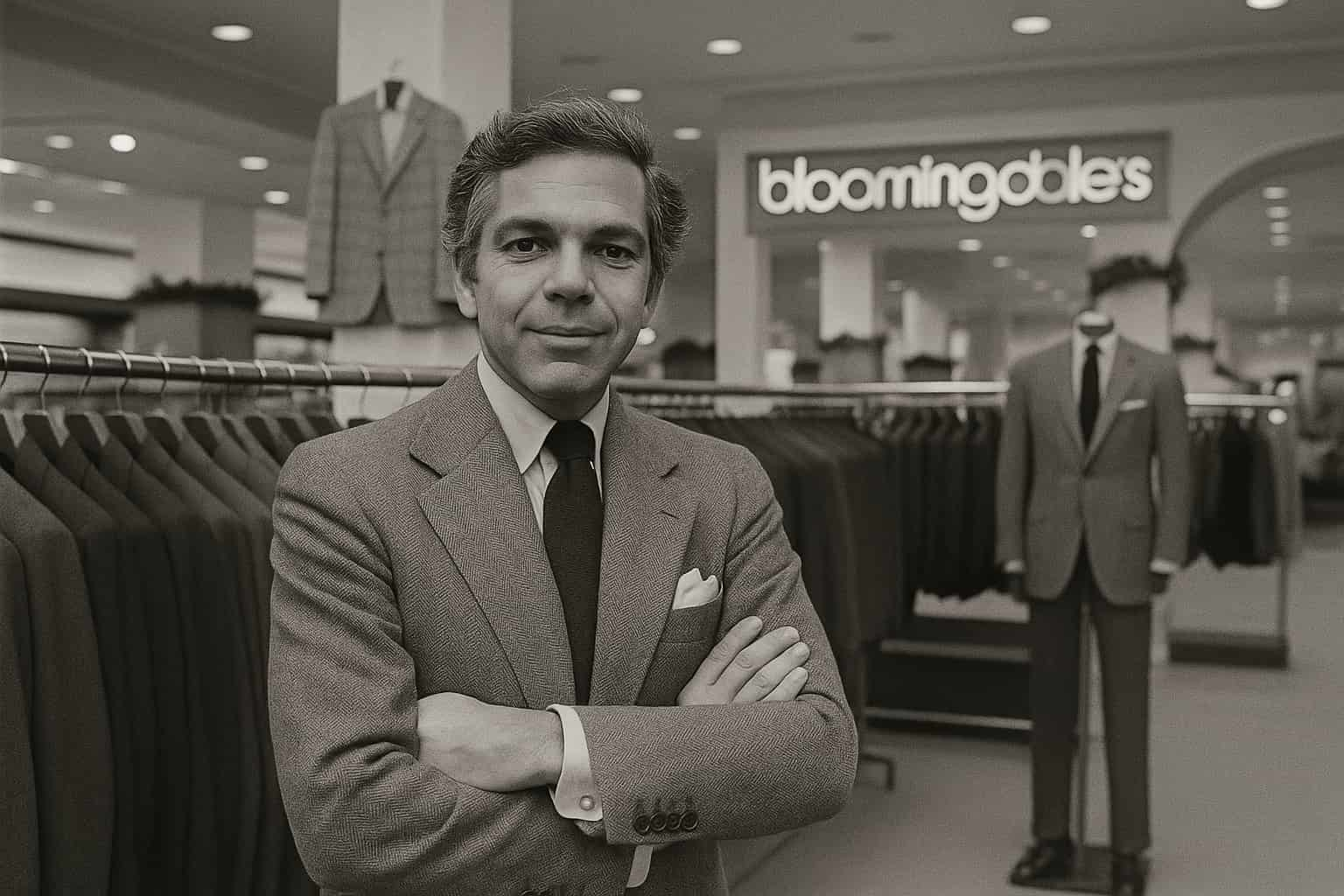
Bloomingdale’s, Manhattan’s prestigious department store, became the launching pad for Ralph’s success. The store’s buyers were initially skeptical of his unconventional designs, but Ralph’s passion and vision eventually won them over. In an unprecedented move, Bloomingdale’s gave him his own in-store boutique, marking the first time the store had granted such prominence to a new designer.
Rapid Sales Success
Sales exploded beyond anyone’s expectations. Ralph sold $500,000 worth of ties in his first year, a staggering amount that validated his belief in his unique vision. This success proved that consumers were hungry for something different—something that spoke to their aspirations rather than just their practical needs.
Expanding the Brand
Venturing into Women’s Fashion
Building on this momentum, Ralph expanded into women’s fashion in 1971 with a line of tailored shirts. These garments introduced the world to the now-iconic Polo player emblem, which appeared on the shirt’s cuff. This logo would become one of the most recognizable symbols in fashion history.
First Freestanding Store
That same year brought another milestone when Ralph opened his first freestanding store on Rodeo Drive in Beverly Hills, California. This location positioned his brand among the world’s most exclusive retailers and demonstrated his commitment to creating a complete luxury experience for his customers.
The Iconic Polo Shirt
Ralph’s signature cotton mesh Polo shirt, launched in 1972, became a cultural phenomenon. Available in seventeen different colors and featuring the polo player logo at the chest, these shirts embodied the preppy aesthetic that would define American casual wear for decades. The advertising tagline “Every team has its color – Polo has seventeen” captured the brand’s inclusive yet exclusive appeal.
Hollywood & Cultural Breakthroughs
Styling The Great Gatsby
Hollywood provided another breakthrough when Ralph outfitted the male cast of The Great Gatsby in 1974. His 1920s-inspired suits and sweaters, including the pink suit designed especially for Robert Redford’s Jay Gatsby, introduced his designs to millions of moviegoers worldwide. This collaboration established Ralph as the designer who could bring cinematic elegance to real life.
Dressing Annie Hall
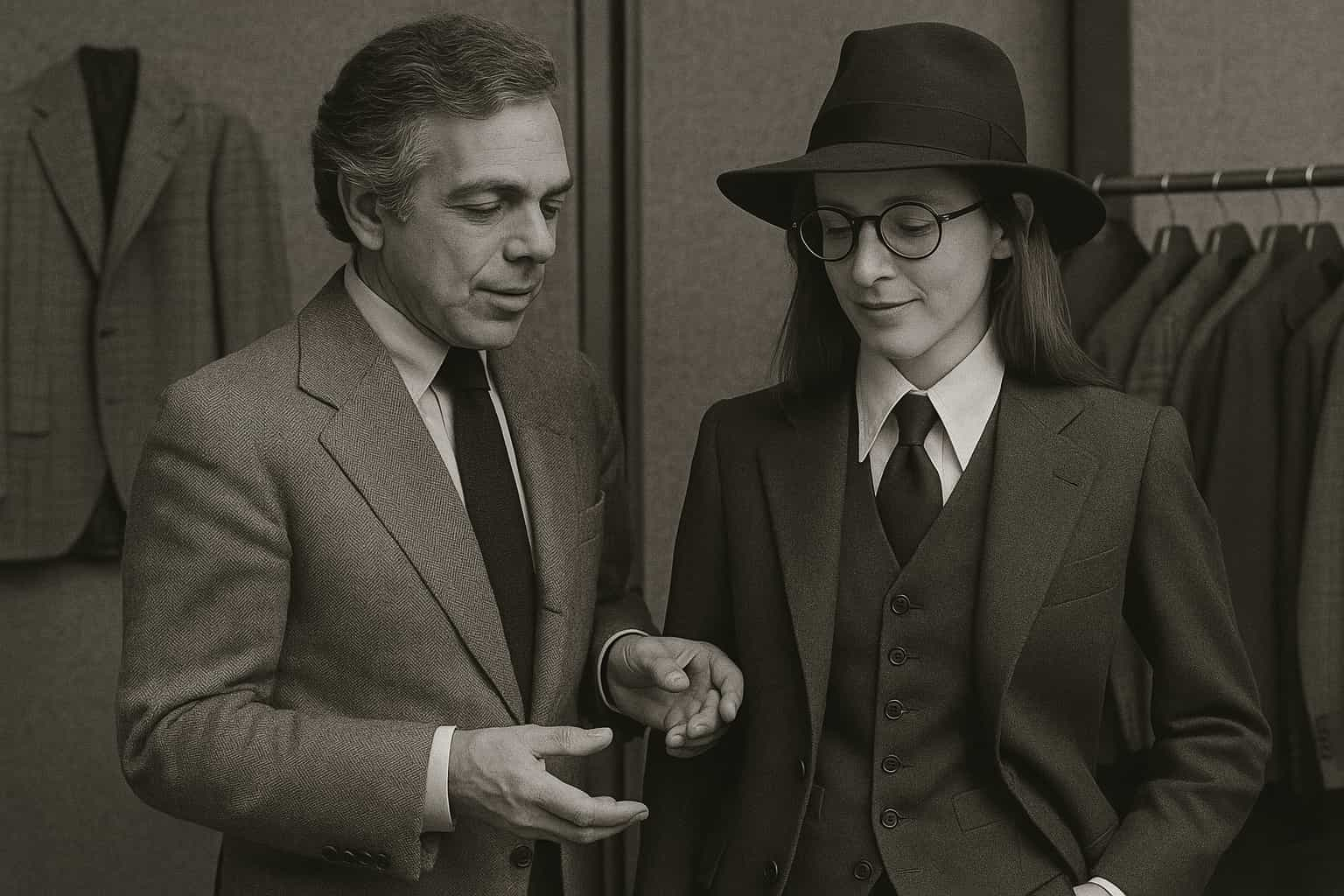
The success continued with Diane Keaton and Woody Allen wearing Ralph’s clothes throughout the 1977 film Annie Hall. These high-profile placements cemented his reputation as the designer who understood how clothing could tell stories and create characters.
Key Business Moves
Fragrance Launch & Brand Extension
Ralph’s expansion into fragrance marked a strategic masterstroke that would generate enormous profits for decades. In March 1978, he launched two fragrances simultaneously at Bloomingdale’s: Lauren for women and Polo for men. This dual launch was unprecedented in the industry and demonstrated his understanding of brand extension and market opportunity.
Going Global
International expansion became Ralph’s next priority. In 1981, he opened the first freestanding store for an American designer on New Bond Street in London’s prestigious West End. This move established Ralph Lauren as a global brand and proved that American style could compete with European luxury houses.
The Rhinelander Mansion Flagship
The acquisition of the Rhinelander mansion on Madison Avenue and 72nd Street in 1986 represented Ralph’s boldest real estate move. Working with design consultant Naomi Leff, he transformed this historic building into a flagship store that recreated the original opulence of New York’s Gilded Age. This store became a destination that sold not just clothing but an entire lifestyle fantasy.
Corporate Growth & Diversification
IPO & Creative Contro
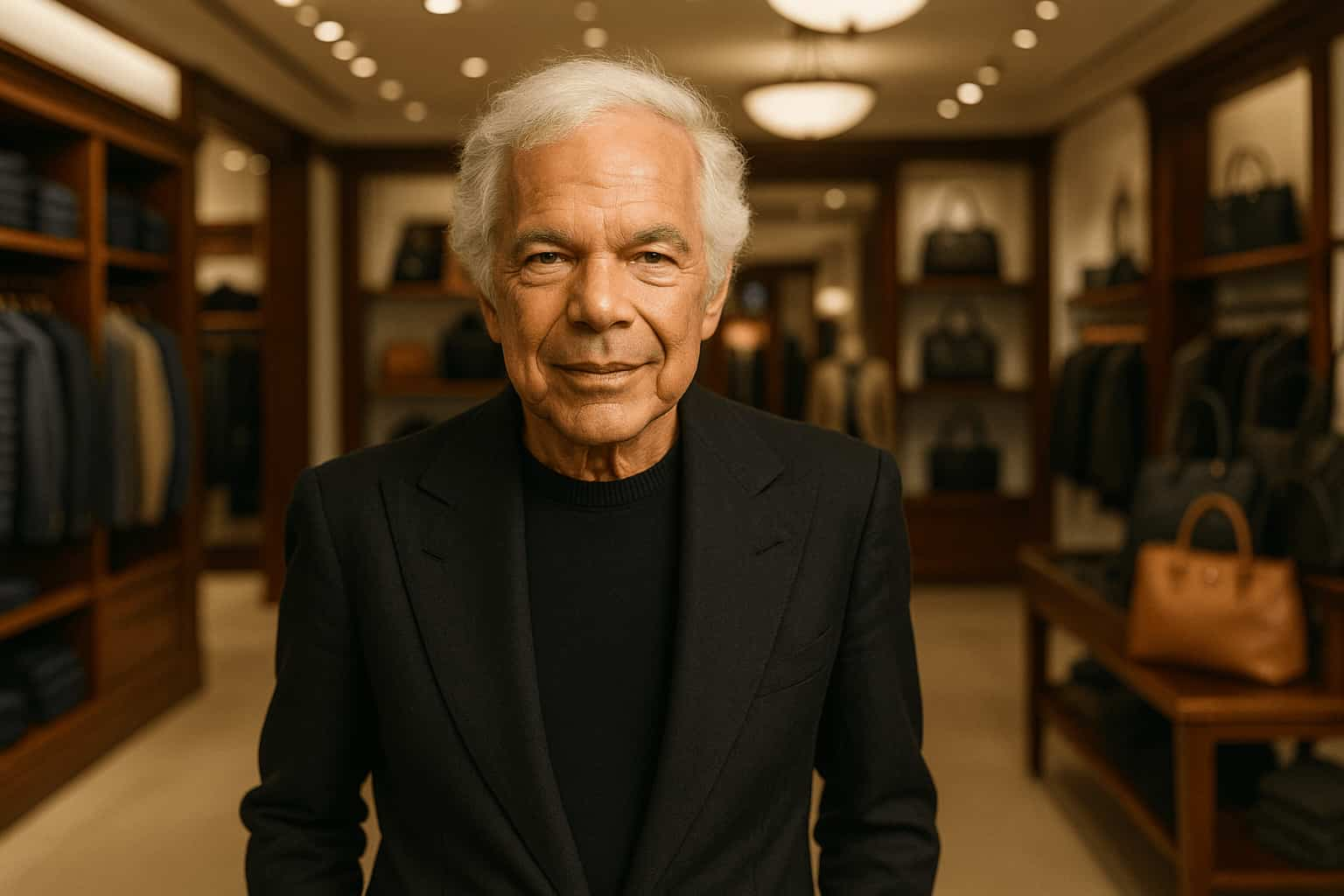
Ralph’s decision to take his company public on June 12, 1997, marked a crucial business milestone. The New York Stock Exchange listing provided capital for expansion while maintaining his control over the company’s creative direction. He structured the deal to retain most of the voting power, ensuring that his vision would continue to guide the brand.
Multiple Product Lines for Diverse Markets
Diversification became a key strategy as Ralph launched multiple product lines targeting different market segments:
- Polo Sport (1992): Captured the growing athleisure market.
- Ralph Lauren Purple Label (1995): Offered ultra-luxury menswear.
- Lauren Ralph Lauren (1996): Delivered accessible luxury to a broader audience.
Venturing into Hospitality
Restaurant ventures demonstrated Ralph’s commitment to lifestyle branding beyond fashion. The 98-seat RL restaurant opened in Chicago in 1999, followed by Ralph’s in Paris in 2010 and The Polo Bar in New York in 2015. These establishments extended the Ralph Lauren experience into dining and entertainment.
Digital and Retail Innovation
Early E-Commerce Strategy
Digital transformation became essential as consumer behavior shifted online. The launch of polo.com in 2000 through RL Media, a partnership with NBC, established Ralph’s early presence in e-commerce. When he acquired NBC’s share in 2007 and relaunched as ralphlauren.com, he demonstrated his commitment to controlling his brand’s digital destiny.
Mass Retail with Prestige Design
Strategic partnerships expanded Ralph’s reach into new markets. The American Living brand, launched exclusively for JCPenney in 2008, represented the largest cross-category brand launch in both companies’ histories. This collaboration brought Ralph Lauren design sensibility to middle-market consumers without diluting the luxury brand.
Legacy & Lessons Learned
A Pioneer of Lifestyle Branding
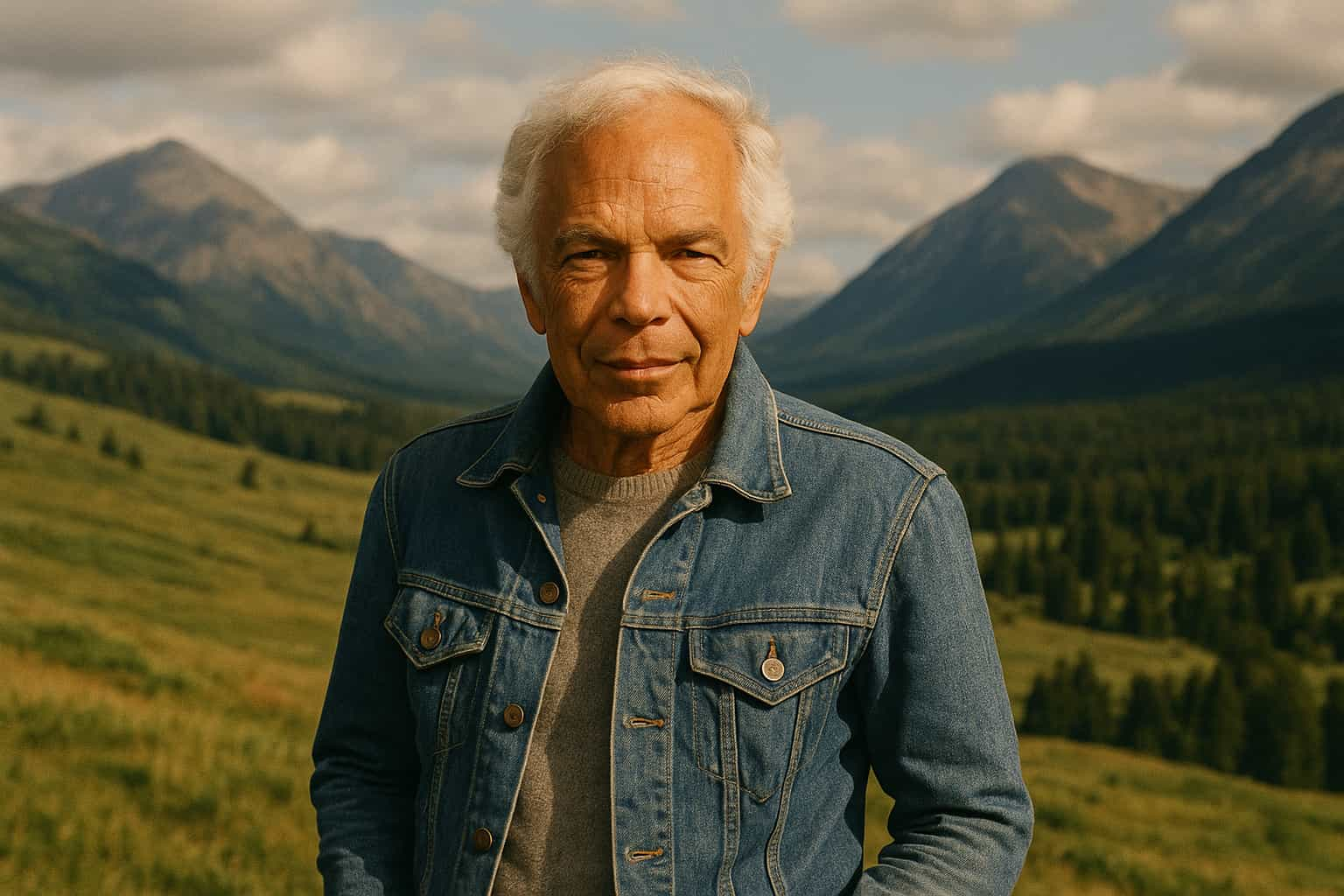
Ralph Lauren’s legacy extends far beyond fashion into the realm of cultural transformation. He single-handedly created the concept of lifestyle branding, proving that consumers don’t just buy products – they buy into dreams, aspirations, and identities. His success demonstrated that authenticity and vision matter more than formal credentials or industry connections.
Vision Over Conformity
The most powerful lesson from Ralph’s journey is the importance of staying true to your vision despite criticism and doubt. When he designed wide, colorful ties in an era of narrow, plain ones, industry experts predicted failure. His willingness to trust his instincts over conventional wisdom became the foundation of his success.
Reinvention as a Path to Growth
Ralph’s transformation from Ralph Lifshitz to Ralph Lauren teaches us that reinvention is not only possible but sometimes necessary. He understood that success often requires shedding limiting beliefs and identities that hold us back. His name change wasn’t about denying his heritage but about creating space for his dreams to flourish.
The Power of Persistence
Persistence emerges as another crucial lesson from Ralph’s story. He faced rejection, ridicule, and financial struggles but never abandoned his vision of creating beautiful, aspirational clothing. His ability to maintain focus during difficult times separated him from countless others who gave up when faced with obstacles.
Storytelling as Strategy
Ralph’s emphasis on storytelling revolutionized marketing and branding across industries. He understood that people don’t just want products; they want to be part of a narrative that makes them feel special and connected to something larger than themselves. Every Ralph Lauren advertisement tells a story of aspiration and achievement.
Commitment to Quality and Craftsmanship
Quality and craftsmanship became Ralph’s non-negotiable standards, even when cheaper alternatives could have increased profits. He proved that consumers will pay premium prices for products that deliver exceptional value and emotional satisfaction. This commitment to excellence built customer loyalty that spans generations.
Global Appeal of the American Dream
Ralph’s global success demonstrates the universal appeal of American optimism and aspiration. His designs captured the essence of the American dream – the belief that anyone can achieve success through hard work and determination. This message resonated with consumers worldwide who shared similar aspirations.
Balancing Tradition and Innovation
Innovation within tradition became Ralph’s signature approach to design and business. He respected classic American style while constantly finding new ways to make it relevant for contemporary consumers. This balance between heritage and innovation kept his brand fresh without losing its core identity.
Success Beyond Wealth
Today, at 84 years old, Ralph Lauren’s net worth exceeds $11 billion, but his true legacy lies in the millions of people he inspired to pursue their dreams despite humble beginnings. His story proves that with enough vision, persistence, and courage, anyone can transform their life and create something extraordinary.
A Living Testament to the American Dream
Ralph’s journey from the Bronx to billionaire status remains one of the most inspiring rags-to-riches stories in American business history. His success demonstrates that the American dream is still achievable for those willing to work for it, believe in themselves, and never give up on their vision of a better life.
Enduring Inspiration for Dreamers Everywhere
The lessons learned from Ralph Lauren’s extraordinary journey continue to inspire entrepreneurs, designers, and dreamers worldwide. His story reminds us that our circumstances don’t define our destiny – our choices, persistence, and unwavering belief in our dreams determine our ultimate success.
For more inspiring rags-to-riches stories of entrepreneurs who overcame adversity to achieve massive success, visit The Phoenix Ascent.
- From $11,000 to Billions: The Extraordinary Journey of Do Won Chang & Jin Sook Chang
- From Orphanage to Empire: The Leonardo Del Vecchio Story
- From Poverty to Global Empire: The Extraordinary Journey of Ingvar Kamprad
- From Brooklyn Projects to Billion-Dollar Empire: The Extraordinary Rags-to-Riches Journey of Howard Schultz
- From Bullied Dropout to Billionaire: The Extraordinary Rise of François Pinault

